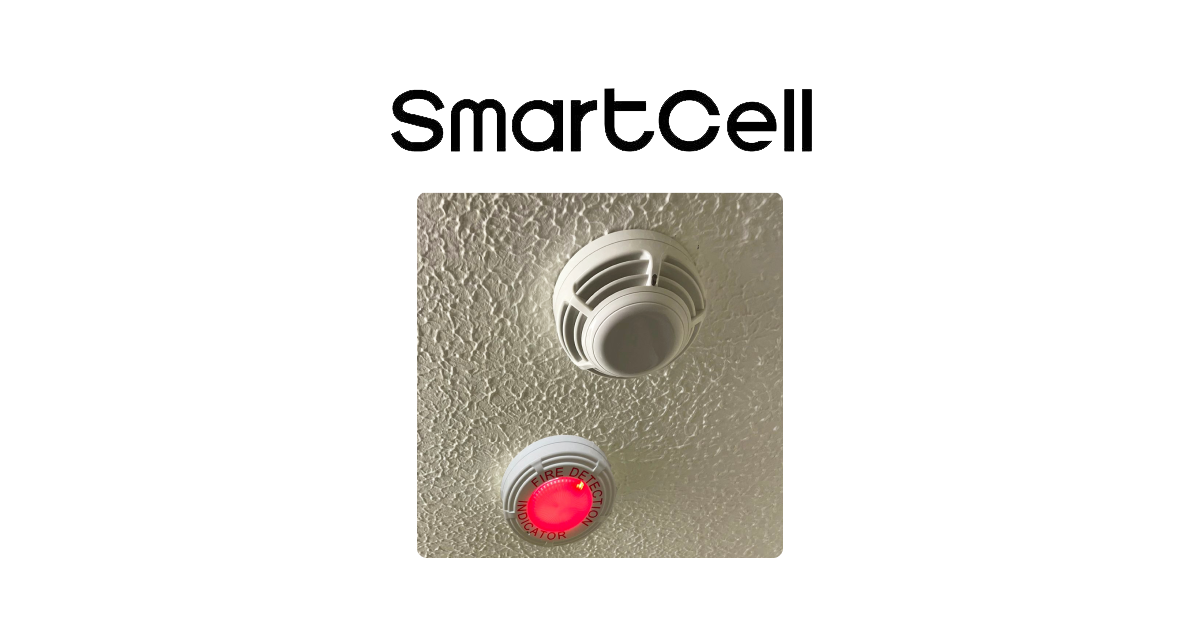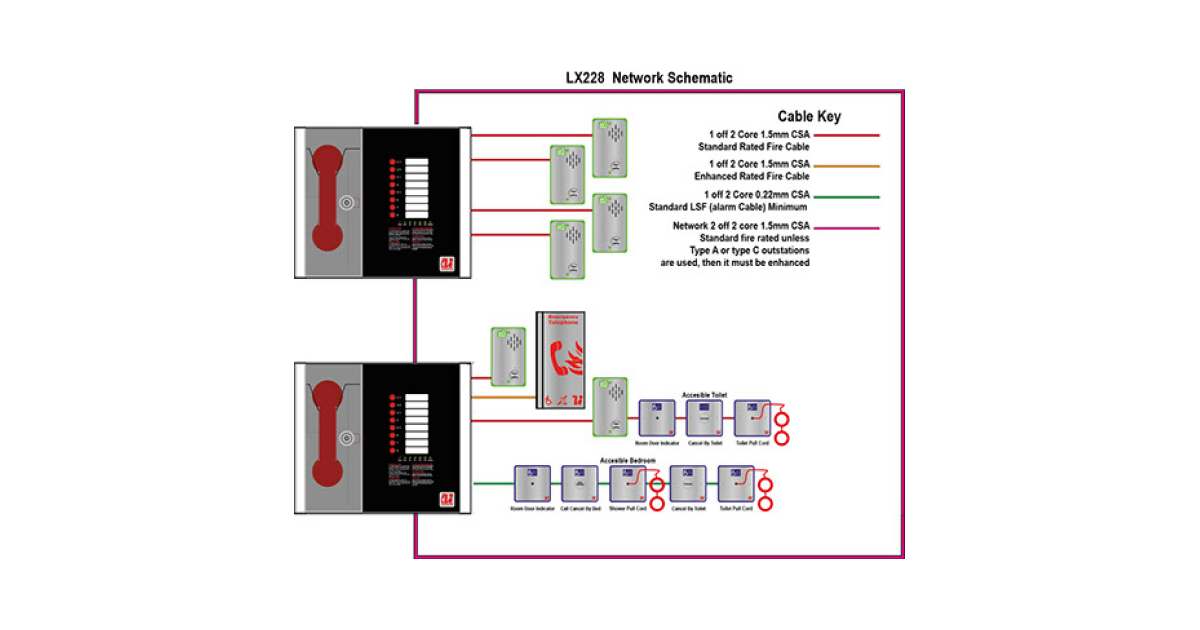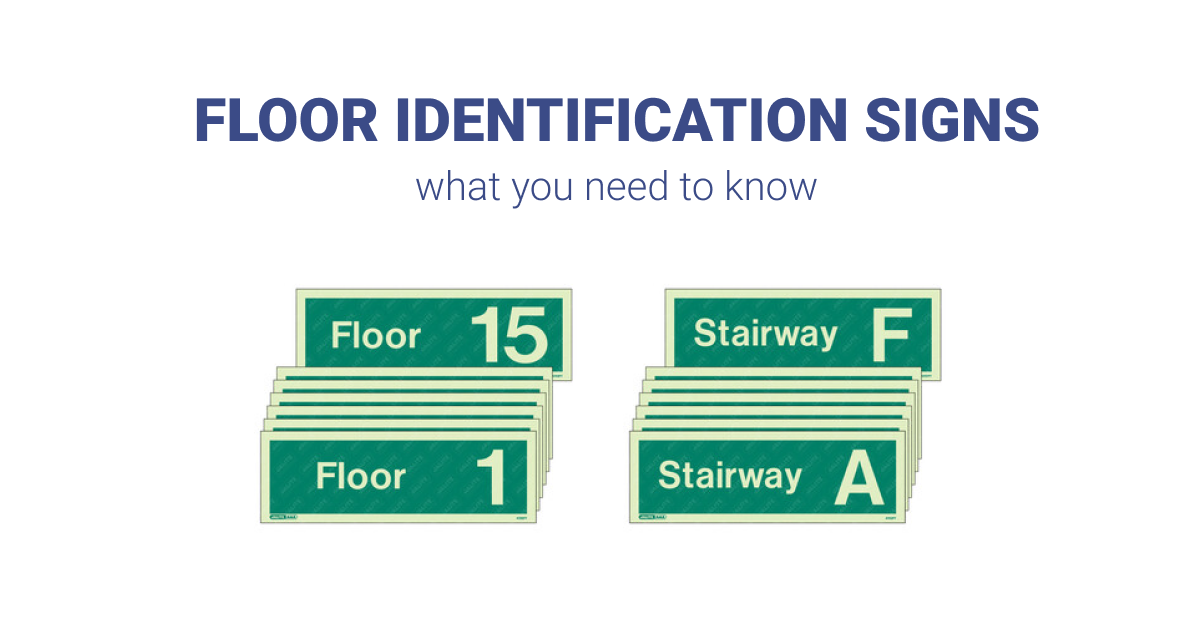
EMS have manufactured a tool to aid the removal of the batteries from the SmartCell devices. This enables the batteries to be removed in a safe manner ensuring that any damage to the cells does not occur. The tool is muti-functional and can also be utilised as a test key for the SmartCell manual call point.
The multi-functional key will be supplied in the future with each SmartCell control panel as part of the accessories package. As the tool is multi-functional it will also be included as standard with each manual call point device to perform the functionality of the alarm test key.
Detector and Sounder devices
Step 1

Step 2
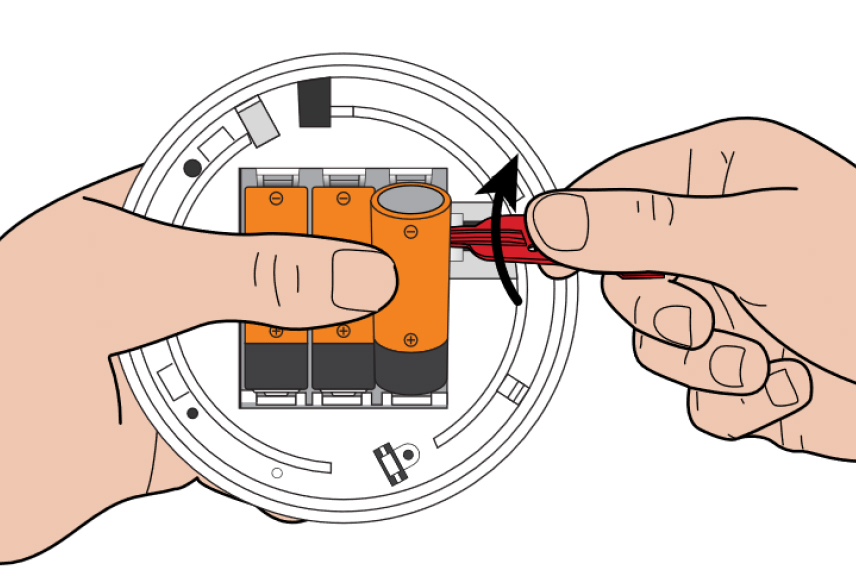
Manual call points
Step 1
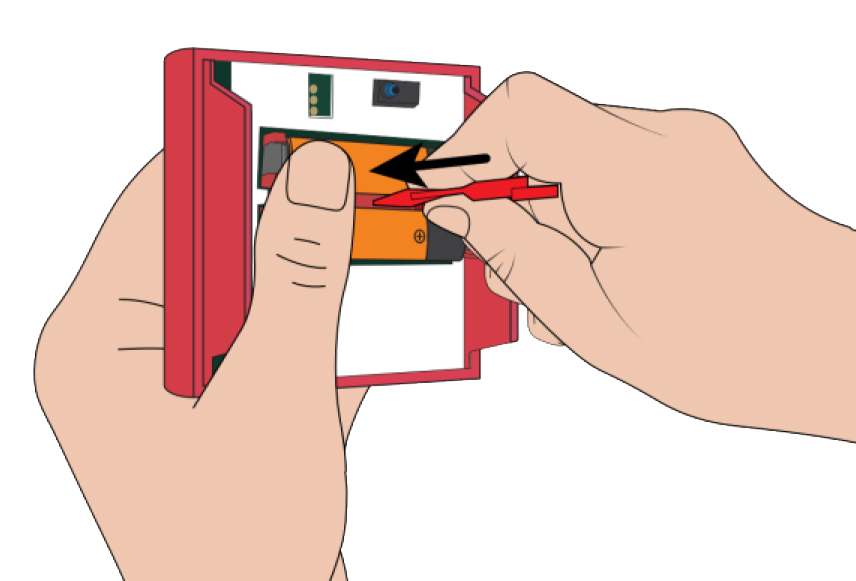
Step 2
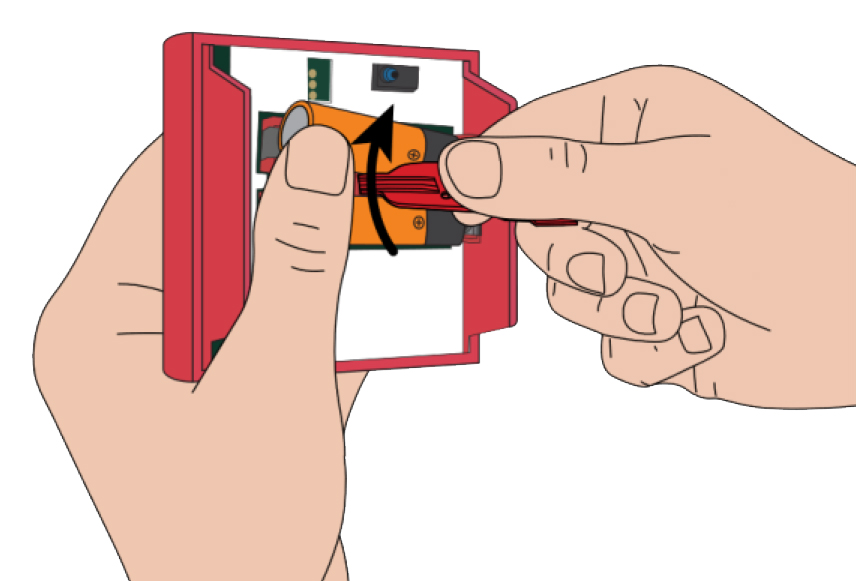
SmartCell lithium battery care guidance
Do
- Follow battery installation guidance supplied with each product to ensure the batteries are inserted correctly.
- Ensure all batteries do not have any signs of damage before installation.
- Remove batteries with a non-metallic object.
- When replacing batteries; remove all old batteries before fitting replacements.
- Only use manufacturer approved battery types.
- On disposal of batteries ensure they are separated from other waste and stored safely and securely, for collection by a reputable waste management company in accordance with local legislation / requirements.
Don’t
- Remove batteries with a sharp or metallic object i.e. screwdrivers/metal key.
- Use a battery that shows ANY signs of damage to the battery terminals or if the outer sleeving is either tearing or pierced. (The sleeving is used as a protective covering to prevent short circuit).
- Use a battery that shows ANY signs of leakage, bulging, dented, swollen, deformed or damaged in any way.
- Use any batteries that have been dropped.
- Mix batteries of different types and ages.
- Charge, short circuit, or incinerate.







